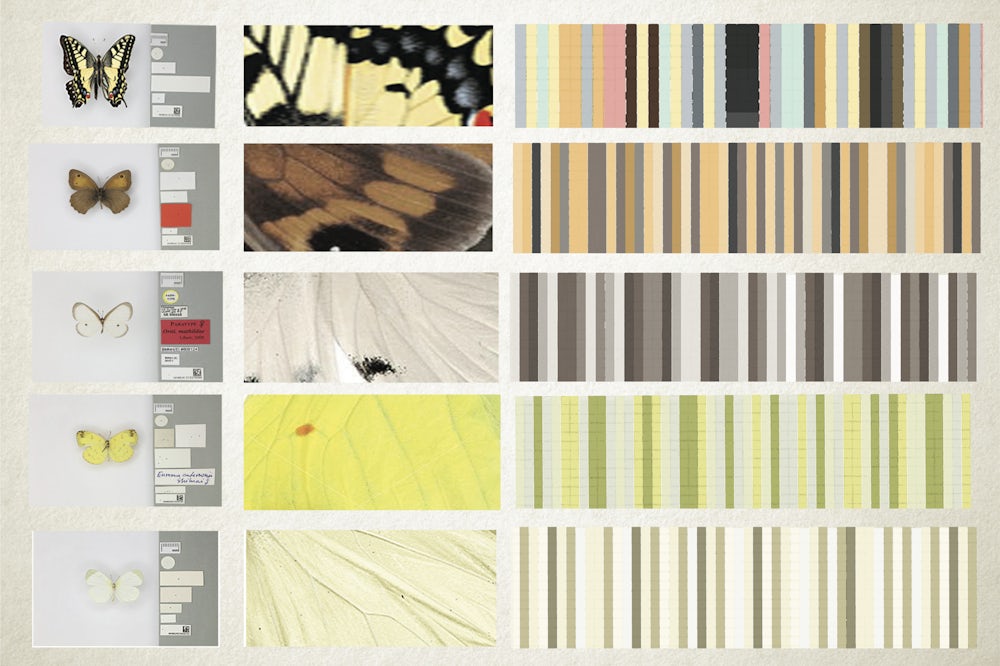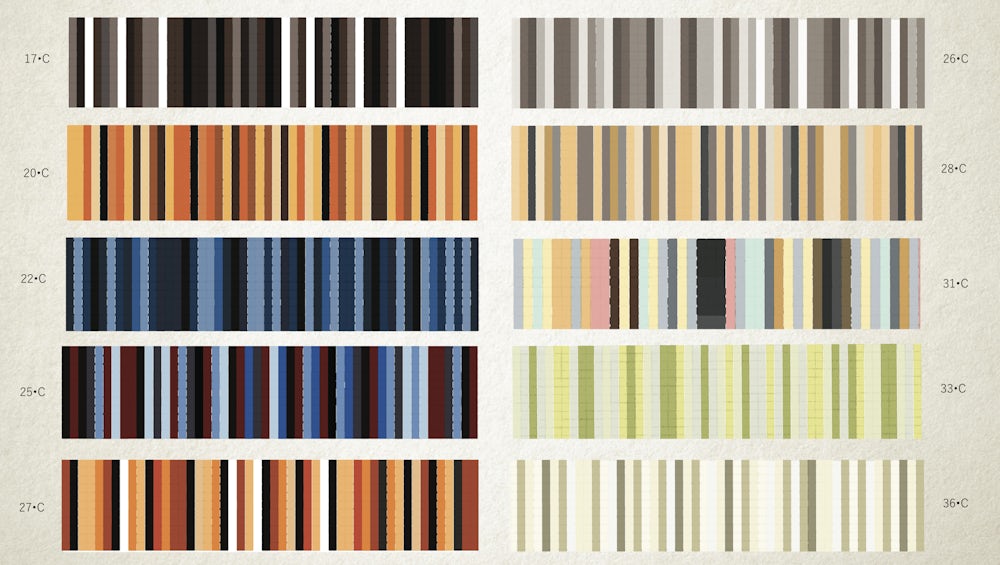Revathy Raveendranath
"Phenology, Butterflies and Anthropogenic Impacts"
Section MS10, Matthew Darmour-Paul
Keywords: environment, migration
The project explores the anthropogenic effects on colour in the environment. Human beings are affecting/have affected the colour of the natural environment and other non-human inhabitants of the world in various ways for millenia, but most noticeably following industrialisation. The effects of this are now being seen across the globe.
There is a direct relationship between climatic variation and the population indices of certain species including butterflies. Their thermoregulatory traits are a direct result of interaction with the environment and they have an optimum temperature window in which they can survive.
Researchers have concluded that as the cooler niches that butterflies rely on have dwindled, there has been a loss in the population of the brightly coloured species. Large pale butterflies have a higher chance of survival in this scenario. Studies have shown that butterfly species have evolved with comparatively paler colours to combat this climate change and to adapt to the changed environment. In Britain, the average spring temperature has increased roughly by 0.5 degree Celsius over the last twenty years.
This project gathers instances of species of butterflies that have turned endangered or have migrated in response to climate change/anthropogenic impacts. This is done with a focus on the geographical area of Britain. I hope to understand the taxonomy of butterflies in the course of this process and subsequently the changes that have occurred/are occurring in their genetic makeup in terms of colour and make a comparison of the hue, saturation and vibrance and differences between the earlier butterflies that used to predominantly populate the area and those that have a higher chance of survival in the present scenario. This is done by looking at the archive of butterflies in The National History Museum, London, identifying species that are stable/declining, creating an abstract colour bar based on wing colour and further going on to understand the relation between temperature and butterfly colouring.
The colour bar takes inspiration from the hard to miss bright colour bars that used to be displayed on a frozen television screen. These bars called SMPTE bars, more commonly known as test bars, were developed by Nobert D. Larky and David D. Holmes in 1951.The horizontal arrangement of the vertical colour bars are used in the final layout. The natural colour bar layout also follows the pixelated pattern of the millions of monochromatic scale cells that are arranged to form the wing pattern of a butterfly. Even with the limited number of species in a small geographical area that has been observed during the course of this project, the difference in the variety and vibrance of the colours between the stable and declining species makes it apparent how butterflies serve as markers, sensors and warnings about the impact of climate change.


